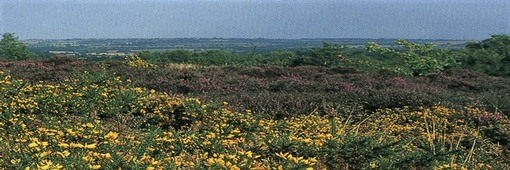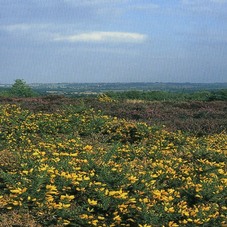

Biodiversity
Action
Plan

2 Whitley Edge, SE189049
3 Broadstone Reservoir, SE193063
4 Ingbirchworth Reservoir, SE214060
5 Royd Moor Reservoir, SE222048
6 Scout Dyke Reservoir, SE 233048
7 Small Shaw (Royd Moor) & High Bank, SE 05043
8 Hartcliff Hill, SE221018
9 Brock Holes, SE228013
15 Black Moor Common, SE275007
34 West Haigh Wood, SE425085
37 Gipsy Marsh, SE418023
41 Wharncliffe Chase and Wood, SK 315945
50 Wogden Foot, SE175026
51 Barrow Colliery, SE361028
Local Wildlife Site criteria
The Lowland Heath Habitat criteria for consideration as a Local Wildlife Site are that the sites are over over 0.25ha and contain ≥25% coverage of one or more of the following dwarf shrubs: Heather, Bell Heather, Cross-leaved Heather, Bilberry, Cowberry, Crowberry, or Gorse spp. The latter in combination with other dwarf shrubs).
The best sites will have a good range of notable plants and support good populations of key species.
Local Wildlife Sites which include Lowland Heath
Other sites not LWS
Other lowland heathland sites exist on former colliery pit stacks and around the slopes near Ingbirchworth and Thurlstone.
Map to follow
Lowland Heath Sites
Lowland Heath Sites.
There are at least 19 areas of lowland heath in Barnsley, some of which are quite small and isolated.
Areas of lowland heath are found on Black Moor Common, the slopes of Hartcliffe Hill, on the hill-edges and slopes near Ingbirchworth and Thurlstone, Whitley Edge and its continuation to High Bank, Royd Moor and Small Shaw, all in the west of Barnsley, and on Wharncliffe Chase, in the south-west of Barnsley.
To the east of the M1, Houghton Common near West Haigh Wood and Gypsy Marsh have small areas of lowland heath.
Lowland heath can also be found on some reclaimed colliery tips like that of Barrow Colliery and Littleworth Park.
